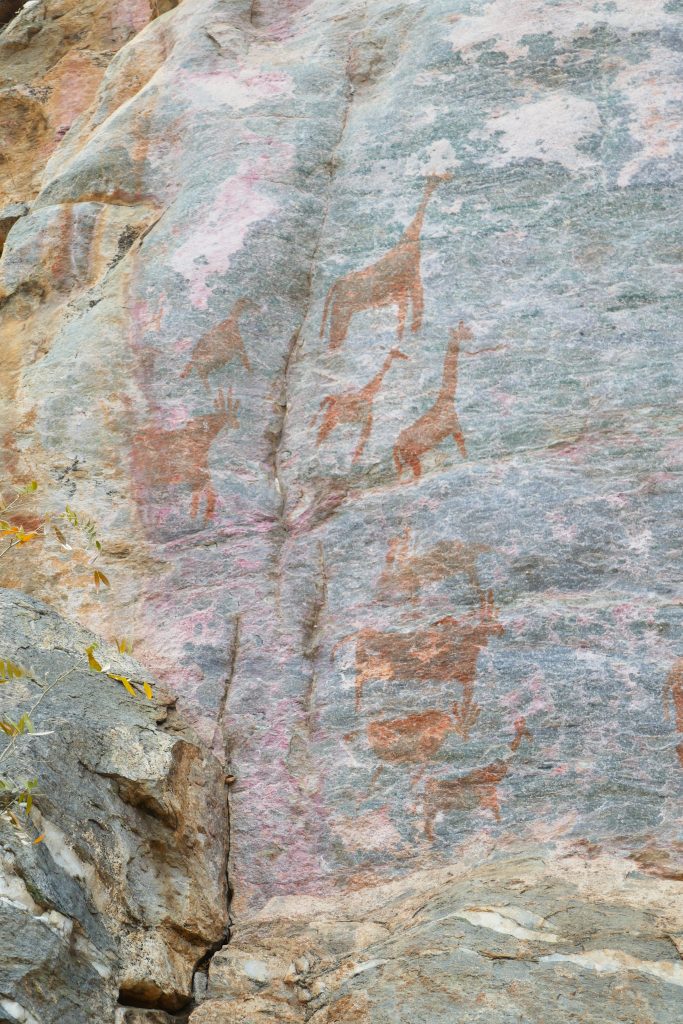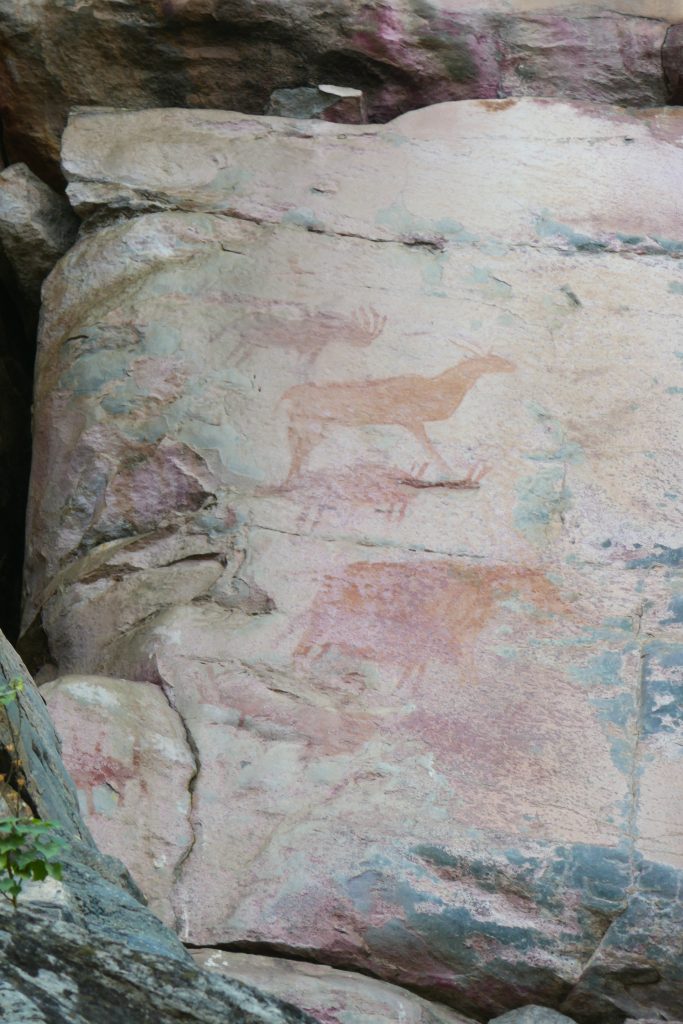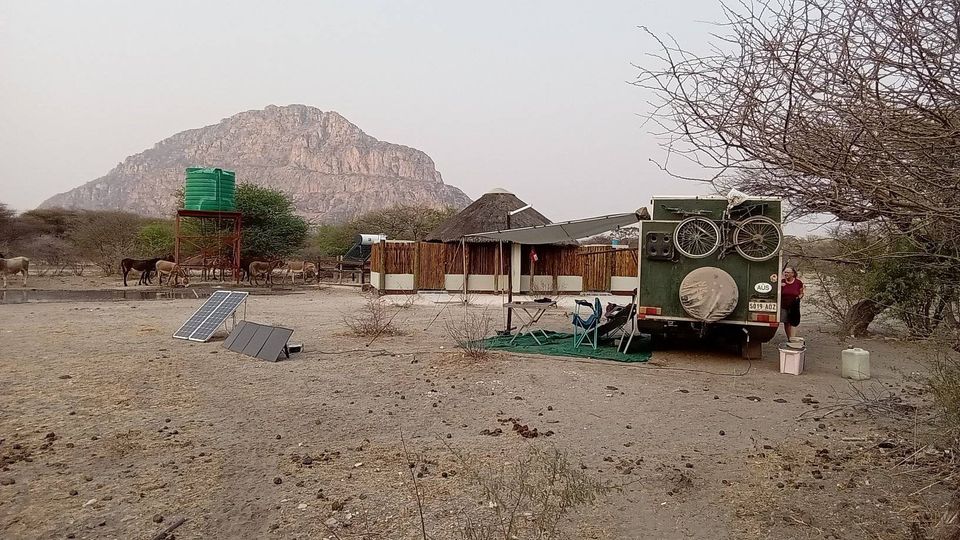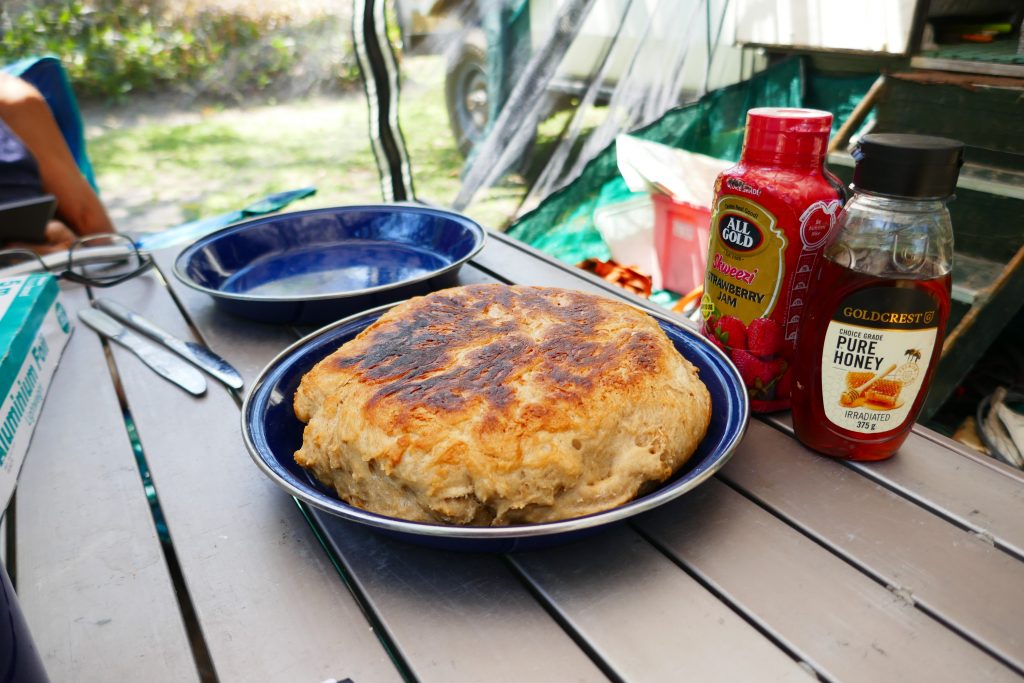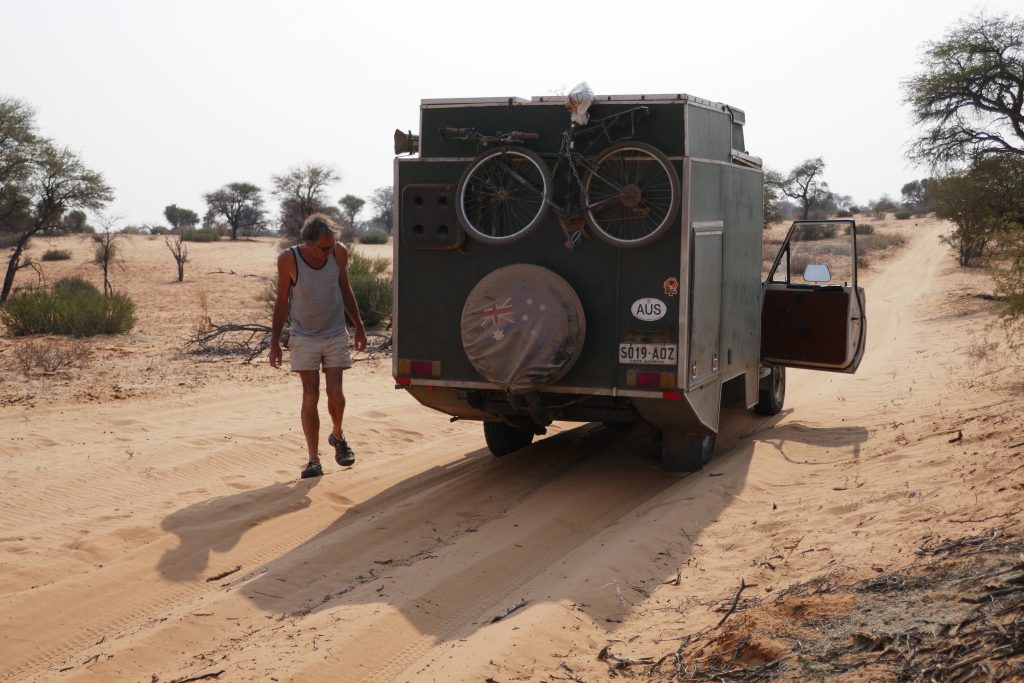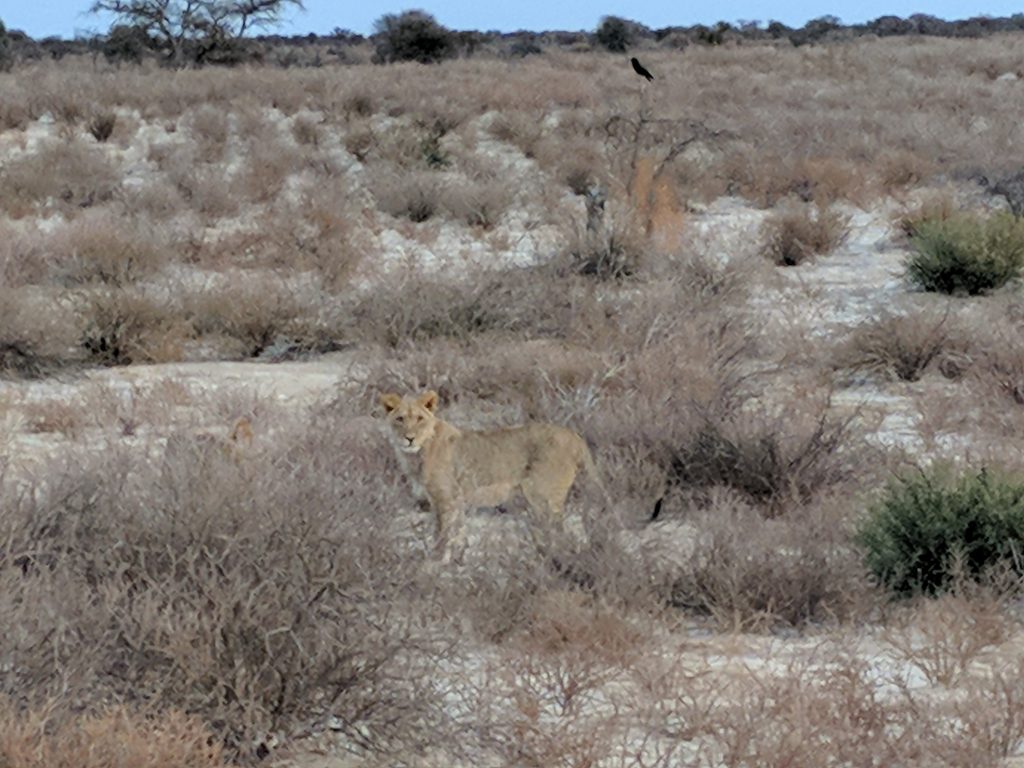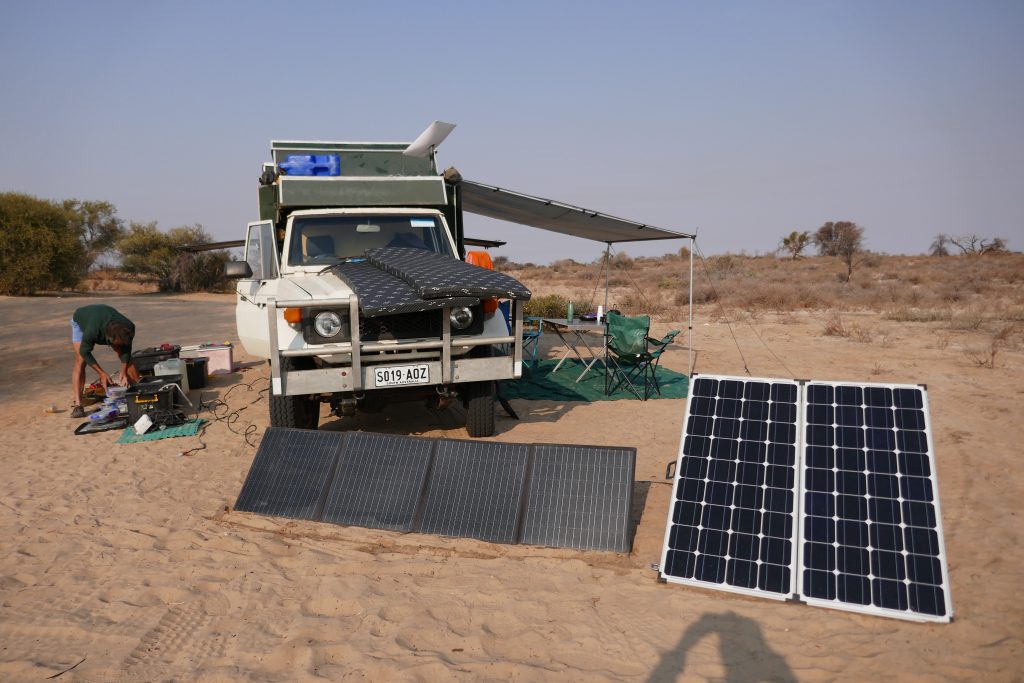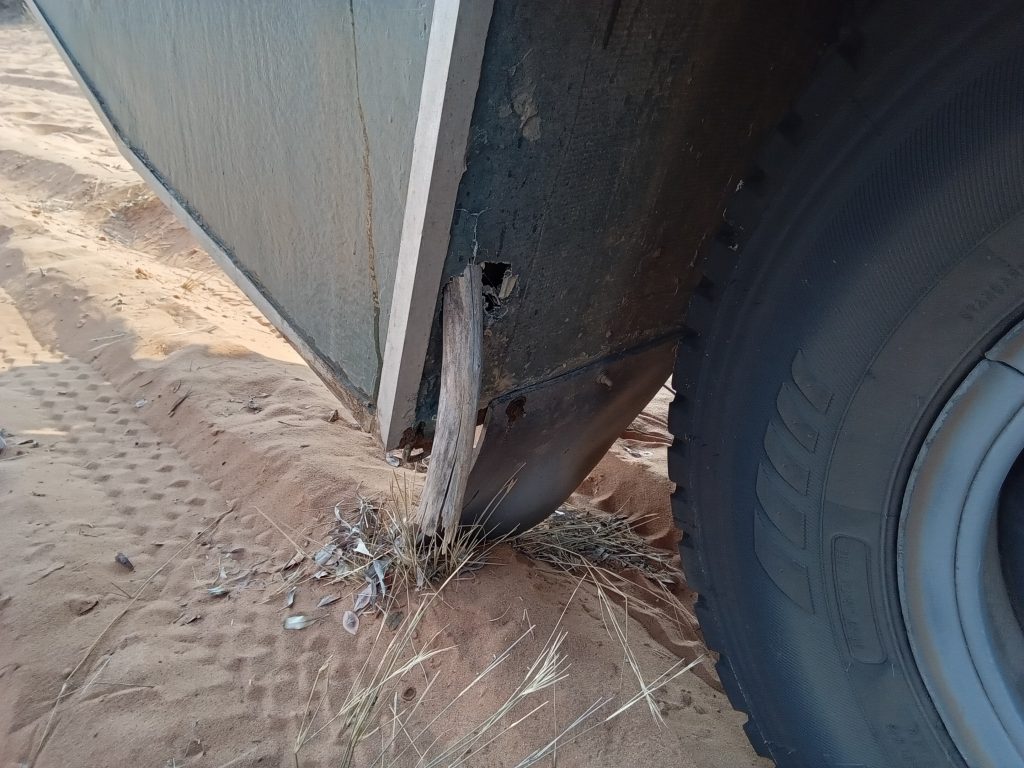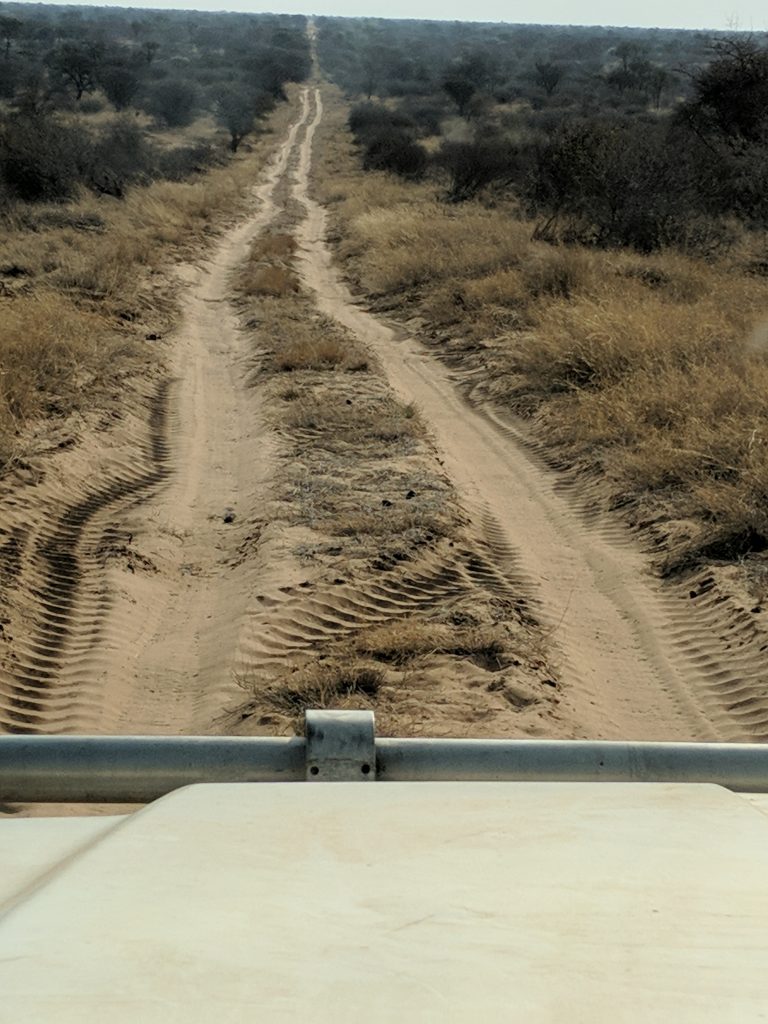The temporary waterhole caused by the overflowing water tank had almost disappeared by the morning. We packed up and headed along the dusty road, with a fair bit of traffic on it to the A35 bitumen. Then heading north to Shakawe, where we went to the Choppies supermarket for more supplies. We then drove to three hardware stores looking for gas canisters, because we were getting low, however no luck. Then 7km south of Shakawe to Drotskys cabins. We were unenthused by Drotskys campsite, and we decided to make a run for the Namibian border and aim for Nunda River Lodge in Namibia on the Caprivi strip. So about 15km up the road we hit the border. Botswana is easy to leave, fill in a form and 30 seconds and your done. Took a bit longer on the Namibian side, but not too hard. Paid the Cross border charge for the vehicle, about $30, and we were on our way north. We arrived at Nunda and got to choose our campsite, so we choose one right next to the river, and the hippos.
The four days we spent at Nunda were hot, around 39C. We used the swimming pool a few times. I rode my bicycle into Divundu a couple of times, 16km return. I installed an external 240v power point so we can get power outside the camper when we are camped with 240v power. The hippos visited almost every night. We often had a Hippo only 3m away from our tent.














